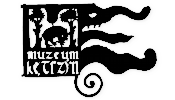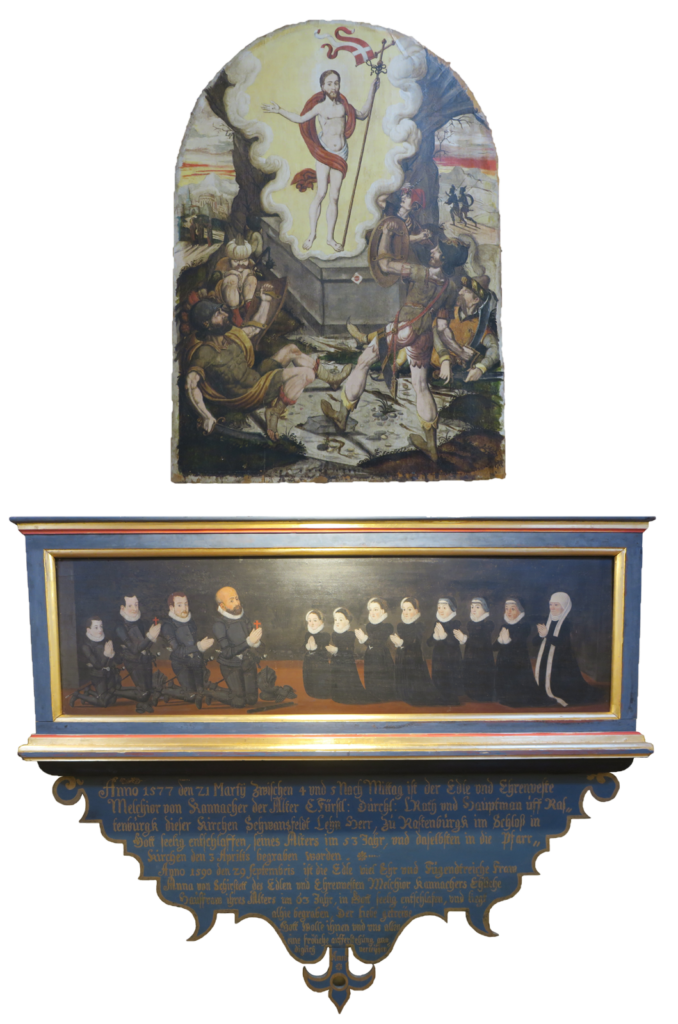
The term epitaph (from Greek ἐπιτάφιος epi-taphios, „over the grave”, „on the gravestone”) means either the inscription commemorating the deceased placed on the tombstone, or the entire monument, plaque or painting in memory of the deceased.
The Museum’s collection include epitaphs of Adam H. Schaffer, Albrecht and Anna von Parthein, Maria Gottlieb Settegast, as well as fragments of the epitaph of Botho zu Eulenburg and a commemorative portrait of Botho Heinrich zu Eulenburg.
From the epitaph of Anna and Melchior von Kannacher (the district captain of Rastenburg, who died in Kętrzyn Castle in 1577) only the main painting of the Resurrection was transferred to the museum collection from the church in Łabędnik. The painting was brought to the Museum without a frame or an accompanying portrait of the kneeling Kannacher family, or a plaque with an epitaph inscription.
The commemoration of Abraham zu Eulenburg, who died far from the family estates, is a cenotaph. A cenotaph is a symbolic tomb that does not contain the body of the deceased being commemorated. The painted wooden slab from Galiny somewhat imitates a stone tombstone.
A 'pictorial epitaph’ (from German Bildepitaph) is a form of commemoration of the deceased, consisting of an inscription, the actual epitaph, and a picture or pictures. Such epitaphs were usually placed near the grave or in a place associated with the person, most often on a wall or pillar in a church.
Such epitaphs could contain representational, narrative or devotional images. They usually showed a portrait of the deceased. They could have numerous additional elements, such as the coats of arms of the deceased, representations of biblical or allegorical figures, various ornaments, vanitas symbols, architectural frames, various inscriptions (for example biblical quotes, mottos, moral maxims).
They varied depending on the time of creation and the social status of the commemorated people and their religion, which influenced both the content of the artworks and the text of the inscriptions. Catholic epitaphs encouraged prayer for the soul of the deceased (sometimes showing him in the company of his patron saint), while Protestant epitaphs expressed the belief in the salvation of the deceased based on his faith.
Preserved elements of the von Kannacher family epitaph
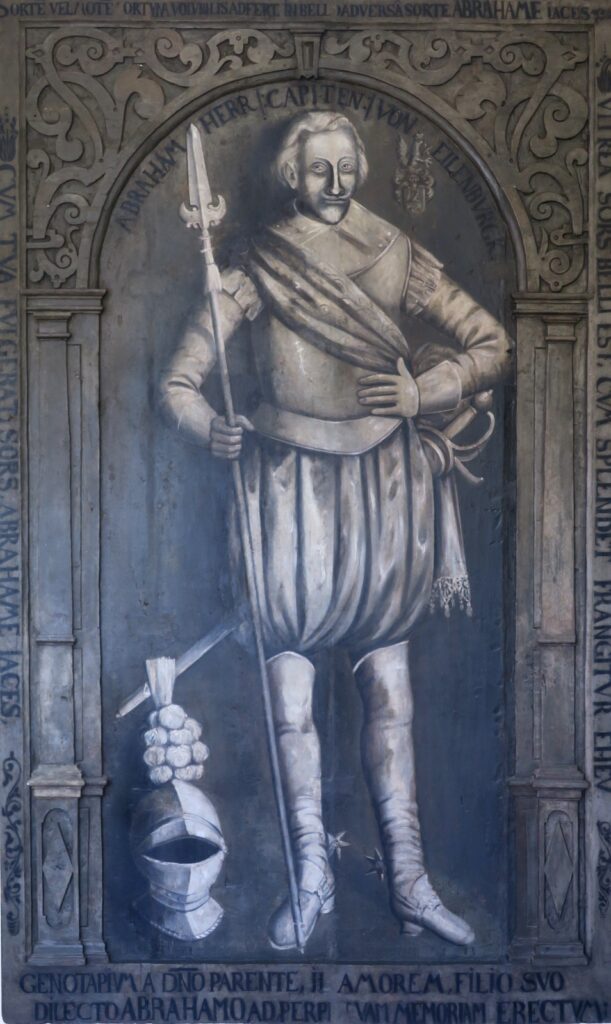 Cenotaph of Captain Abraham zu Eluenburg
Cenotaph of Captain Abraham zu Eluenburg
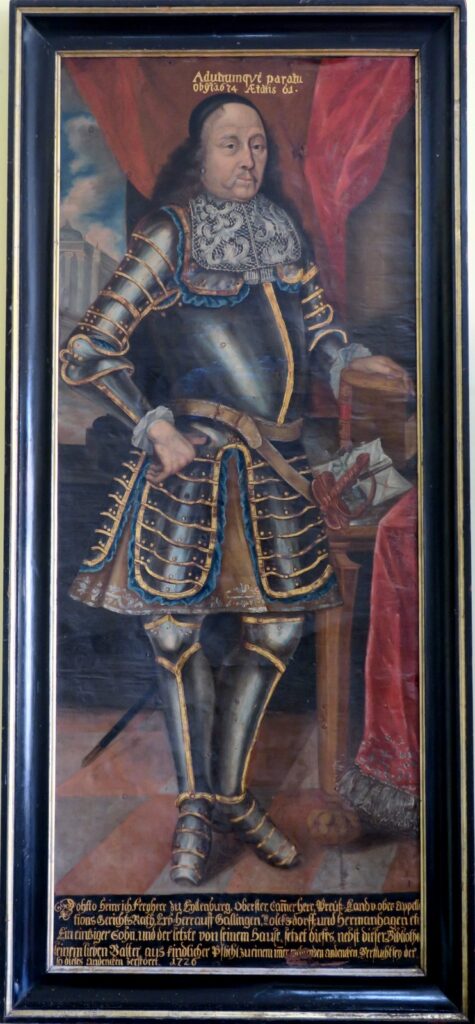 Portrait of Colonel Botho Heinrich zu Eulenburg
Portrait of Colonel Botho Heinrich zu Eulenburg
 Epitaph of Botho zu Eulenburg in the church in Galiny
Epitaph of Botho zu Eulenburg in the church in Galiny
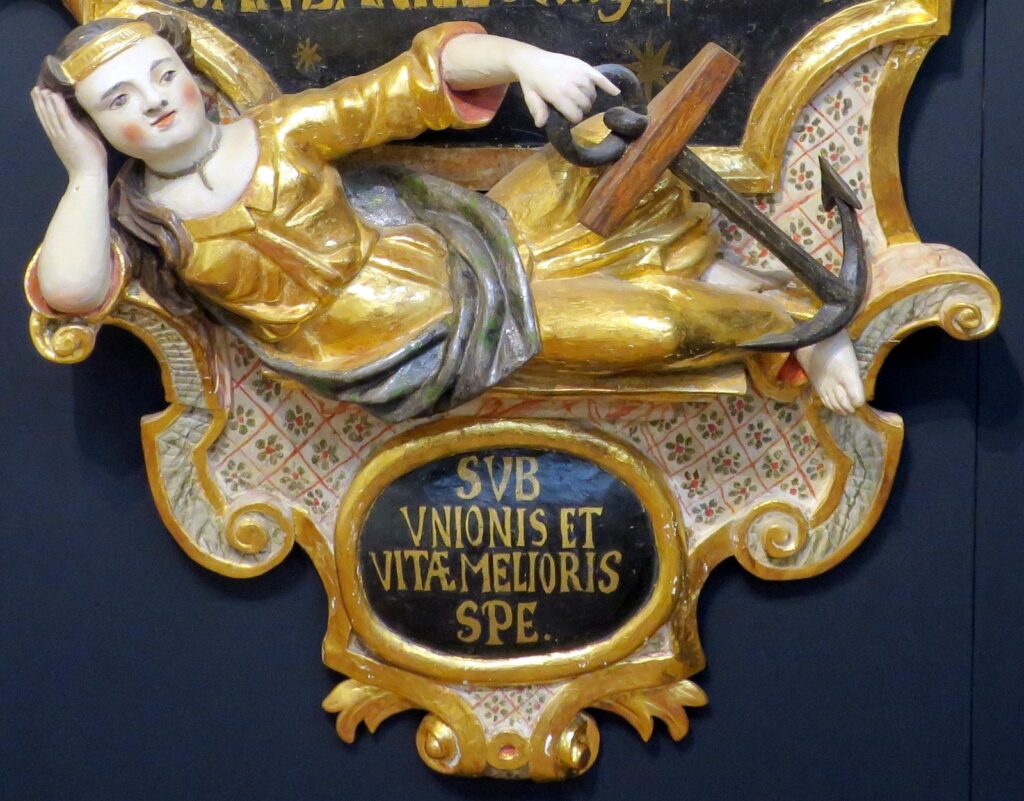 Fragment of the epitaph of Maria G. Settegast from Galiny
Fragment of the epitaph of Maria G. Settegast from Galiny
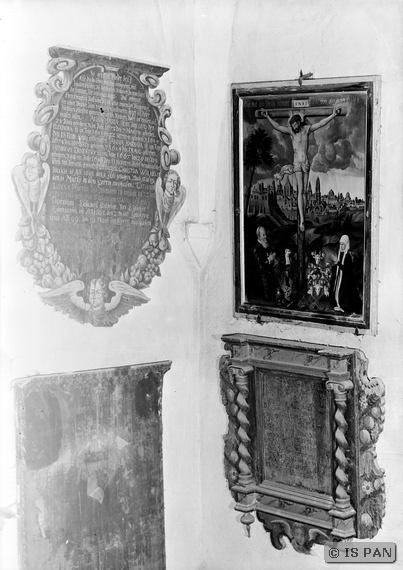 Epitaph of the von Parthein family in the St. Georg’s Church in Kętrzyn
Epitaph of the von Parthein family in the St. Georg’s Church in Kętrzyn
(Photo by Gerhard Strauss, 1938)
Archival photographs from the collection of the former Provincial Heritage Office in Königsberg in the resources of Institute of Art of The Polish Academy of Sciences: Collections of Photographs and Survey Drawings
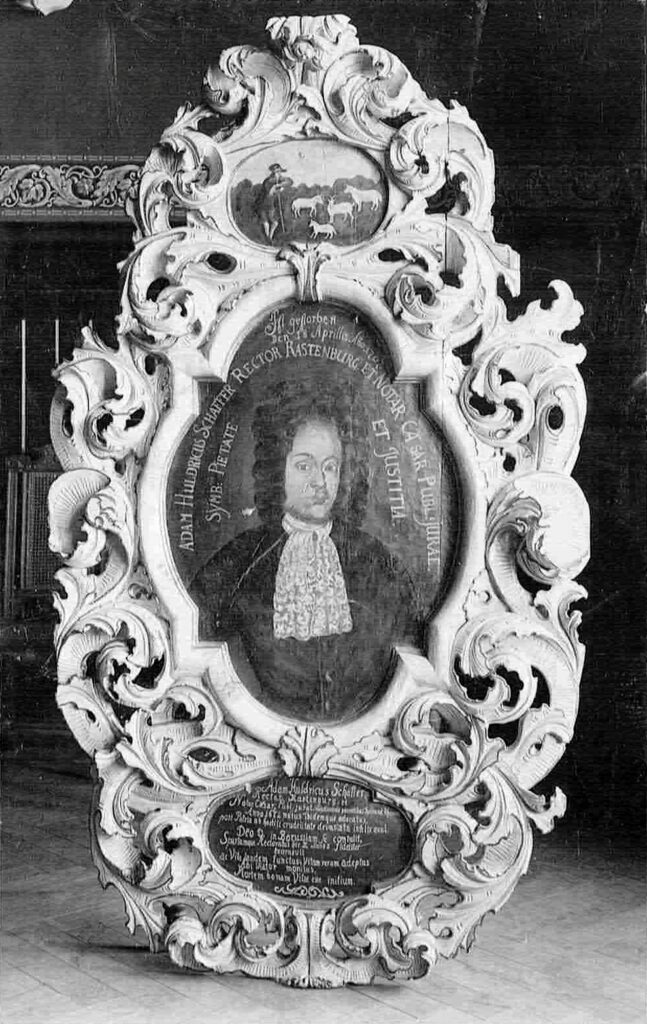 Epitaph of Adam Huldircus Schaffer
Epitaph of Adam Huldircus Schaffer
Archival photograph from the collection of the W. Kętrzyński Museum in Kętrzyn
